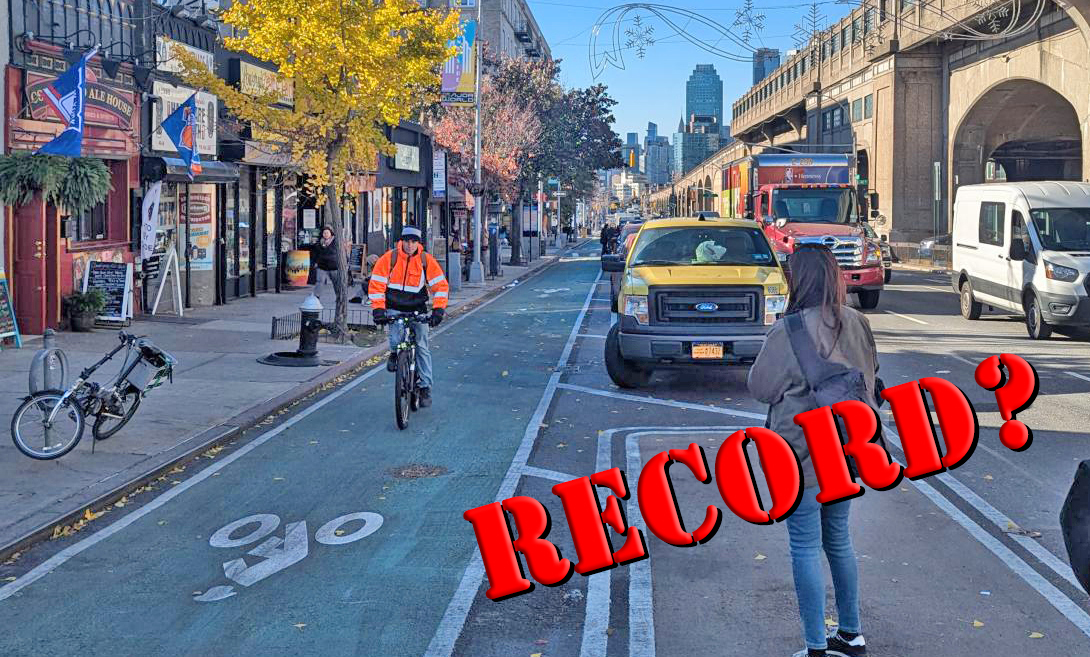
Albany legislation to let New York City enforce its speed limit using automated cameras got a new lease on life last week. A slate of amendments have made the bill more politically palatable, and Staten Island Republican Andrew Lanza has introduced a version of the bill in the State Senate, the first time this version of the bill has been live in the legislature's upper chamber.
For years, Assembly Member Deborah Glick has sponsored bills that would authorize the use of speed cameras -- an enforcement mechanism that has proven extremely effective in preventing deadly driving in other cities -- but until recently, her legislation hasn't gone anywhere in the Assembly. Worse, the speed camera bills haven't had a counterpart in the Senate since the Republicans retook the chamber.
Now, however, a set of amendments could clear a path forward for the bill, albeit one that is still uphill. In response to legislators' concerns, three changes have been made:
- The bill now lays out explicit criteria for the placement of cameras, requiring that the city place them in response to crash history and roadway geometry.
- Only half of the 40 permitted speeding cameras may be mobile; the others must be at fixed locations, though those locations may be changed from time to time.
- Instead of issuing fines to all drivers exceeding the speed limit by 5 miles per hour, fines will only kick in at ten miles above the speed limit.
With those amendments in place, Lanza introduced the bill in the State Senate late last week, a major step forward for the legislation.
Though Lanza is currently the only Senate sponsor, street safety advocates now believe that speed cameras could well pass the Senate before the end of the legislative session on June 21. "The Senate has been pretty effective with moving good legislation forward in a timely way," said Transportation Alternatives' Lindsey Ganson. "I think the sponsors will increase and it will hopefully move through the Senate."
In the Assembly, too, the amendments are expected to ease passage, though that chamber has traditionally been more skeptical of efforts to use automated cameras to enforce traffic laws. "Every Assembly member wanted to know where the cameras were going to go or how they're going to decide," said Ganson, and many said that "fines starting at 5 miles per hour over seemed punitive or aggressive or 'gotcha.'" With the amendments, she expects to be able to return to Assembly members and win new support.
Glick's bill currently has 25 sponsors in the Assembly. With less than a month until the end of the session, Transportation Alternatives has set up an online letter-writing campaign to let New Yorkers write to their Assembly members.
Of the amendments, Ganson saw only the looser standard for giving fines as a reduction in the efficacy of the bill. "The closer we can get people to comply with the 30 mph speed limit the safer it's going to be for all of us," she said. "There's a vast difference between the survival rates and severity of the injury to a pedestrian or cyclist when struck at 40 mph or 30 mph."
That said, most cities using speed cameras only issue fines to drivers traveling 10 miles per hour over the limit, and the enforcement has still proven effective. Data from Washington, D.C., for example, show the number of speeders plummeting where cameras were installed.
Local elected officials urged the legislature to pass the Glick/Lanza speeding camera legislation. "I fully support efforts to bring speed cameras to the streets of New York City," said City Council Transportation Committee chair James Vacca. "Some reports have suggested that drivers could speed every single day for 35 years without getting a ticket. That’s unacceptable. Drivers must know that we are here to protect the greater good, not their ability to use our city’s streets as their private speedways.”





